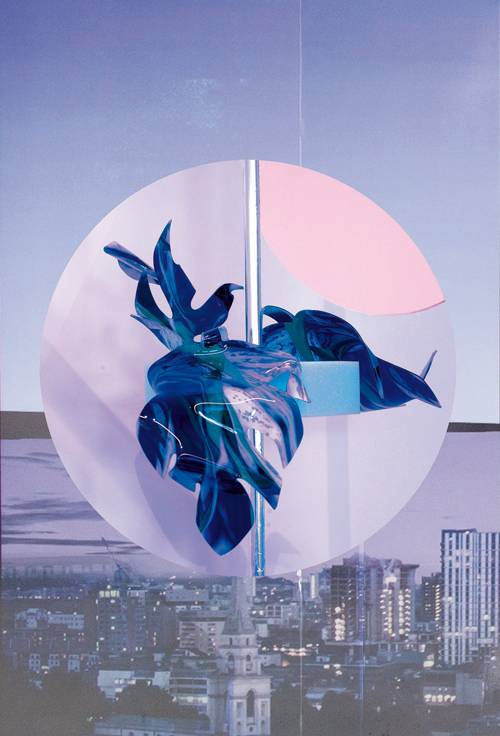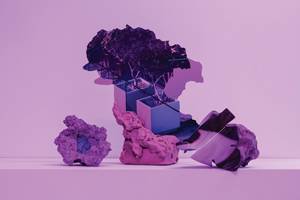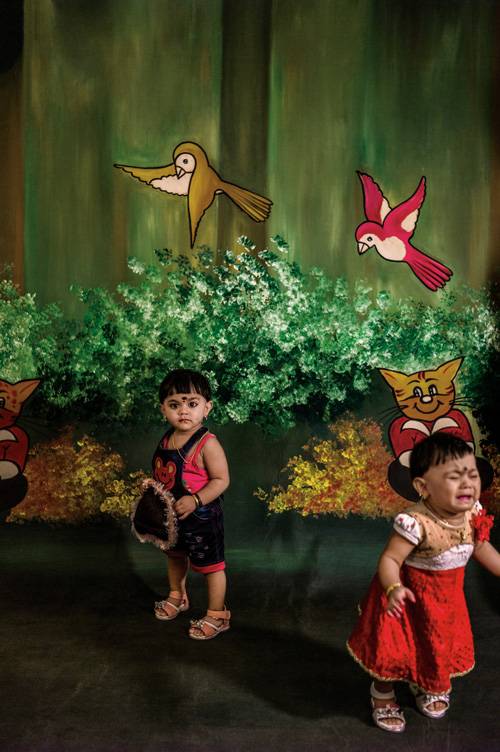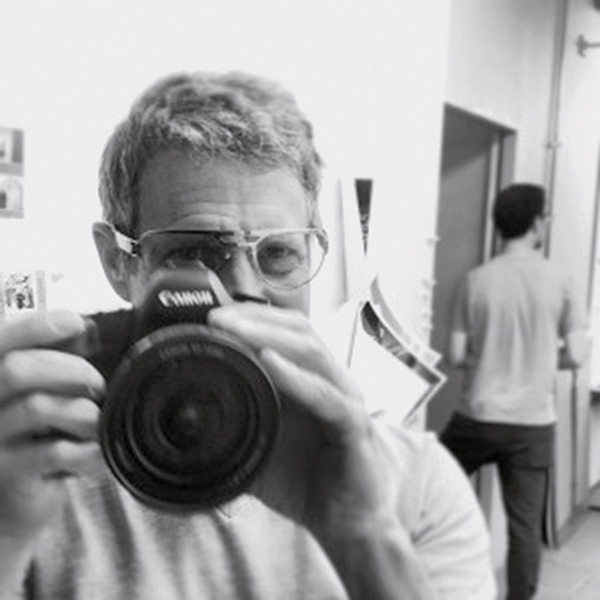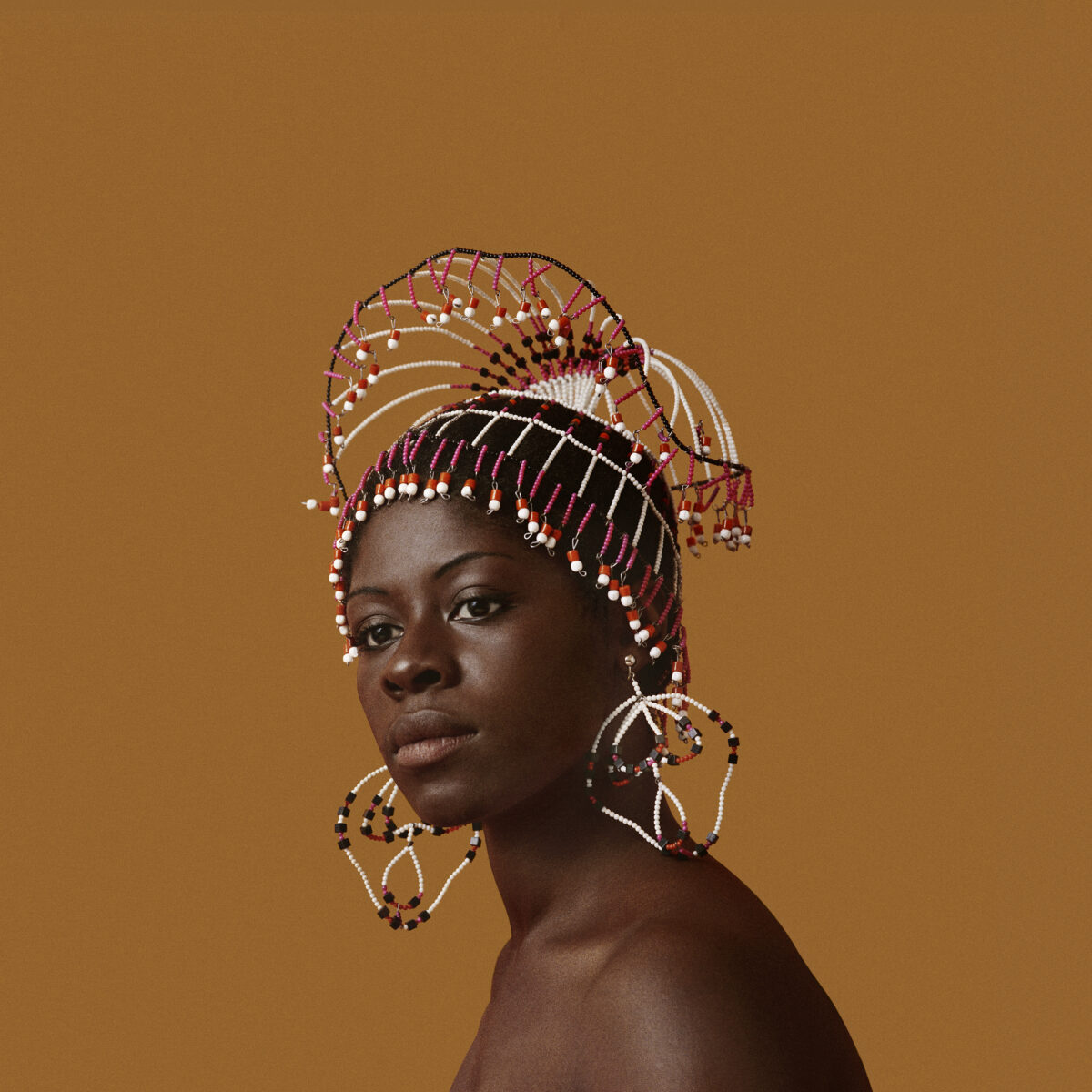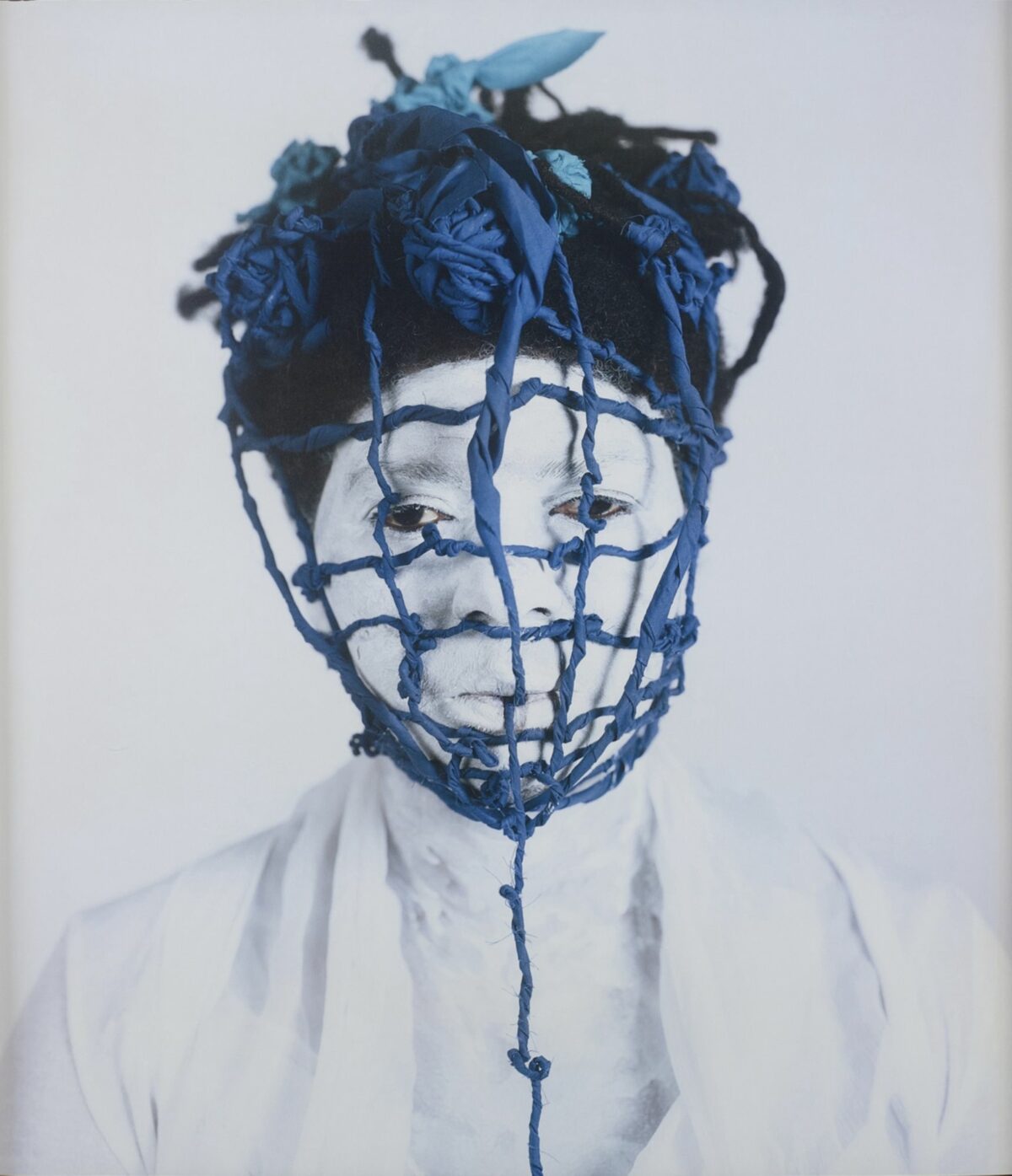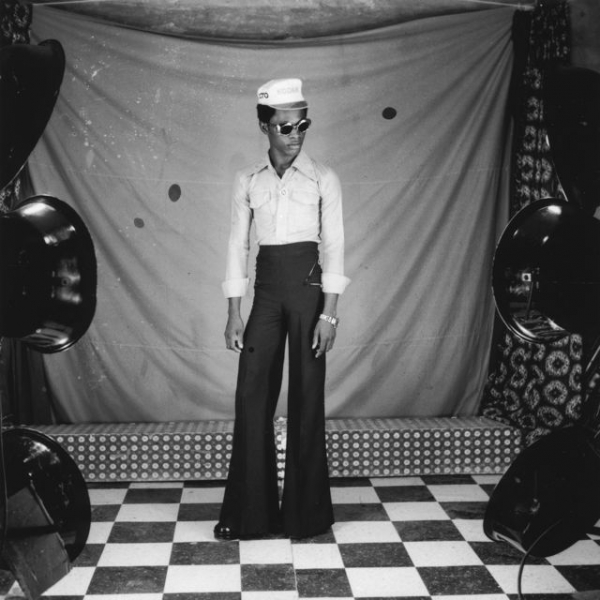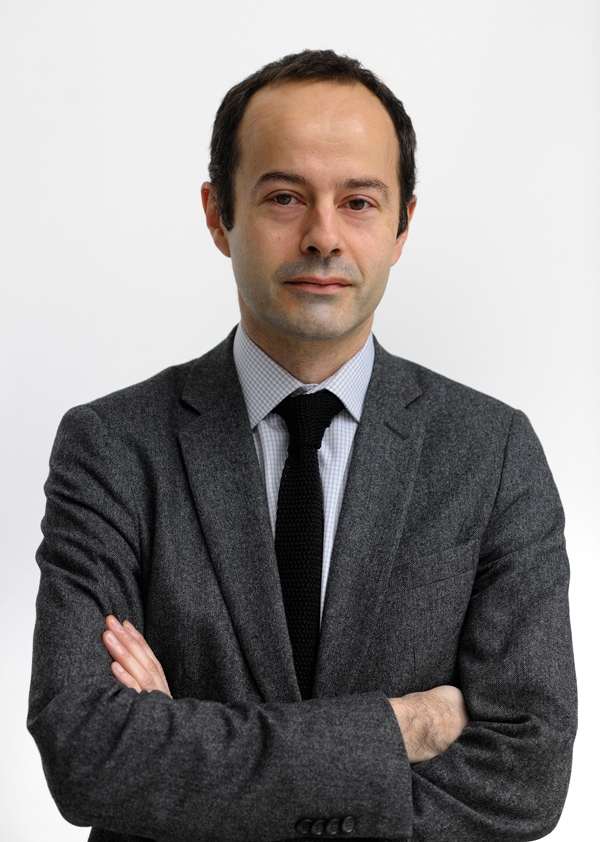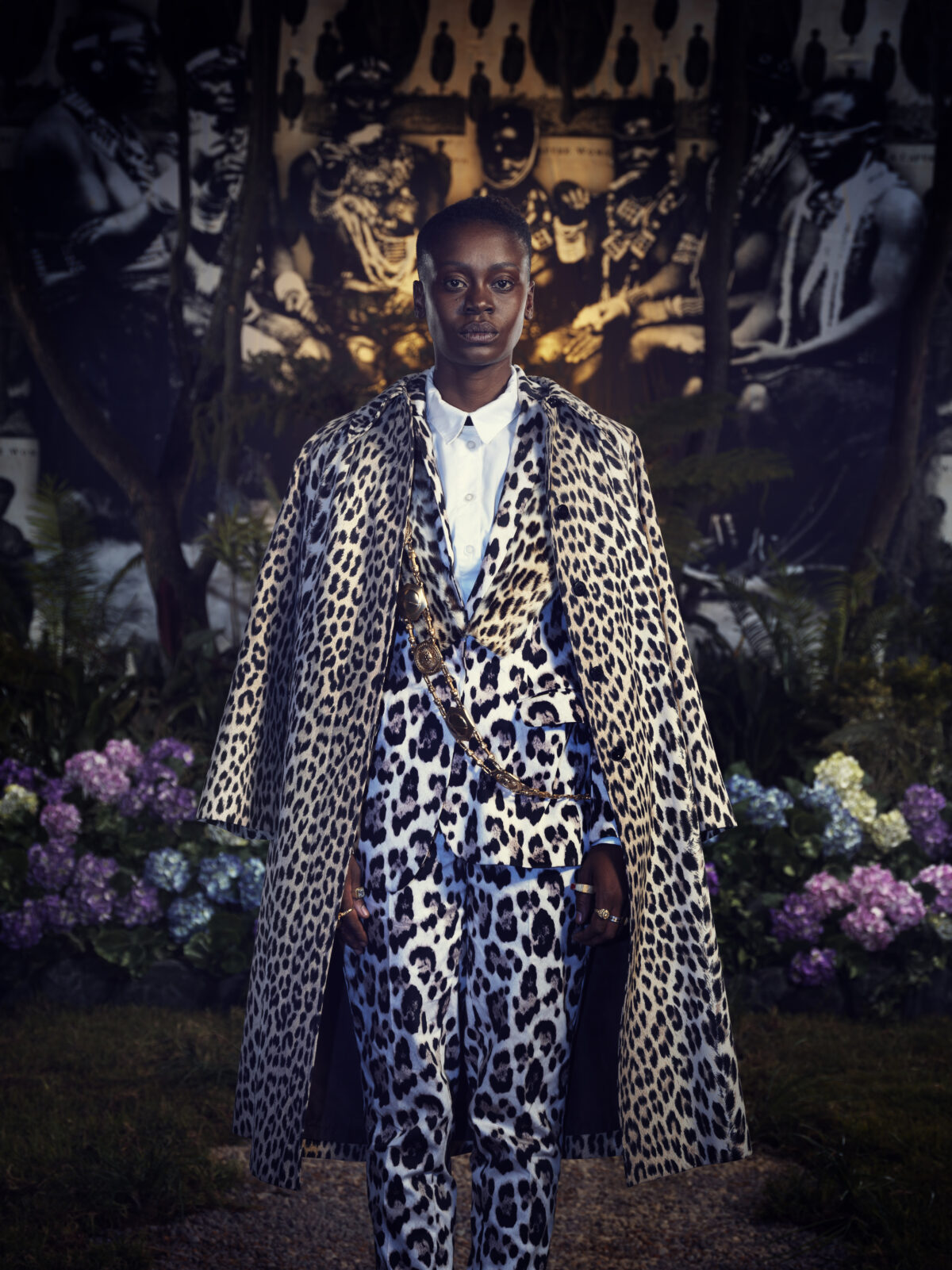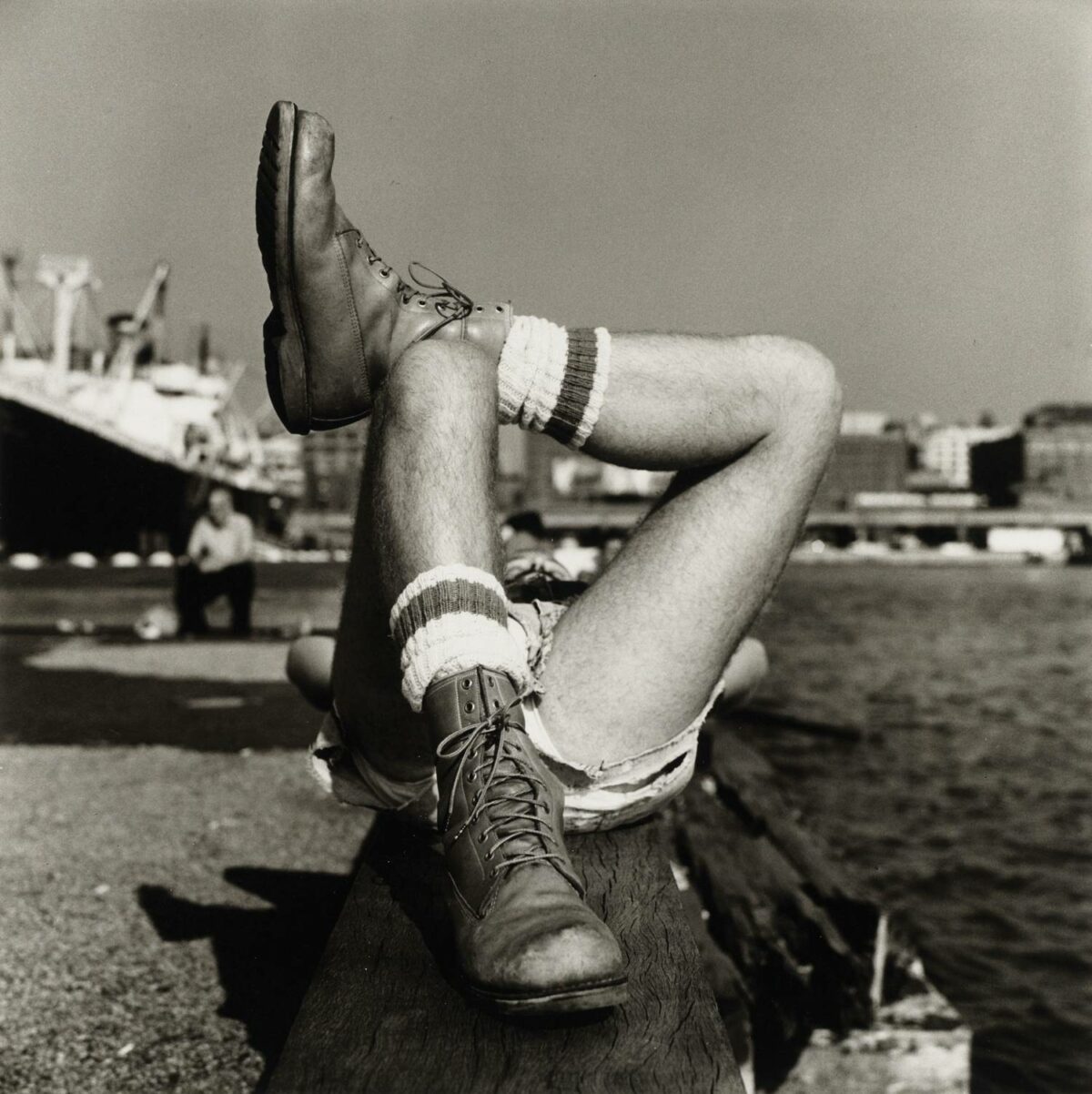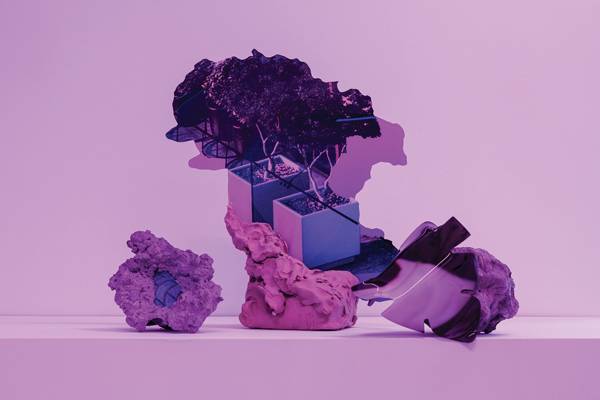

Looking at Felicity Hammond’s photography is an immersive experience that seems to escort us into another age. The London-based photographer uses the word “infiltrate” to describe the almost stealthy way her work engages with a place and invents a middle ground between present and future, collapsing time in the process.
Hammond starts by researching images of an urban site, often computer renderings taken from advertisements and billboards that show what the site is predicted to look like in the future; she then manipulates these images digitally and prints them on translucent acrylic, a flexible material that can be cut and shaped without damaging the image. She prints the images on the underside of the acrylic, creating a filmy screen, which, as she says, creates “a distance between image and viewer” that reinforces the sense that these urban developments are becoming increasingly unattainable economically.
In her recent show Arcades, on view in May at Toronto’s Contact Photo Festival, she created two installations: one inside Contact Gallery, the other on the outside of a nearby building. The two works are reflections on the way urban sprawl is changing the city. She transformed the gallery into what seemed to be a futuristic excavation site: walls were decorated with digitally modified images taken from brochures or advertisements; shelves held clay sculptures as well as images of plants printed on acrylic and transformed into sinuous vibrant three-dimensional forms. Computer-generated images of antique jars and vases were mounted on luminous purple-blue canvas.
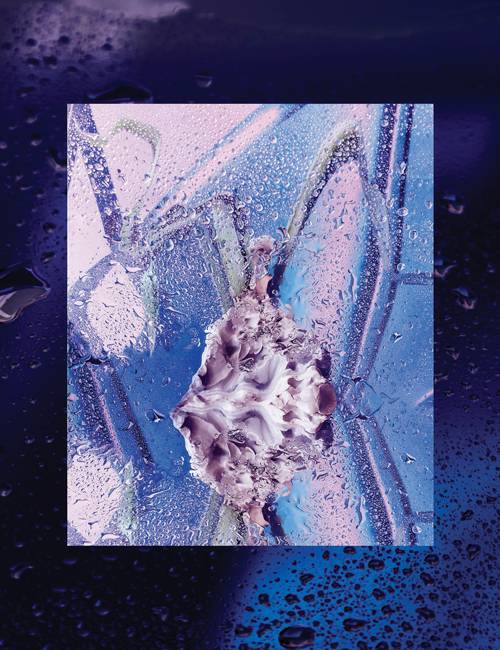

The hues she chooses are always bound to the projects. In In Defence Of Industry, 2017, for instance, she explains, that “the ‘rolling copper-colored hills’ and blast furnaces along with the very heavy nuclear presence” in Barrow-In-Furness – a town located in the North West of England – informed the palette, a variation of orange, yellow, brown, and black shades. In Arcades, the images were printed in pinks and purples, colors that dominated the city’s luxury development ads.
The outdoor installation was a ten-meter banner placed on the side of a repurposed industrial building located near the gallery and in the heart of the city, which is experiencing a surge in condo development. While the gallery installation presented an imagined future archaeological site, the banner – a composite of some 150 images of photographs she took of the Toronto skyline, other construction sites and ruins, along with photographs she has manipulated digitally – was meant, she says, “to speculate on what might happen if we continue to let urban growth proliferate.”
One of the recurring symbols in her practice incorporates the portholes cut into the temporary walls surrounding construction sites. By photographing what’s behind the portholes and the advertising images surrounding them, she offers multiple vantage points, allowing viewers to witness the actual and the future site at the same time, presenting, she says, “an image of a space which transcends linear time.”
Hammond invites us to reflect on our expectations or desires, fuelled by advertising, of what the future holds for us in these urban areas. In her site-oriented installations, she takes the lead from a specific place to consider the homogenized urban landscape, inviting us to consider what we’ll be leaving behind as well as what kind of landscape we’re creating for the future.
